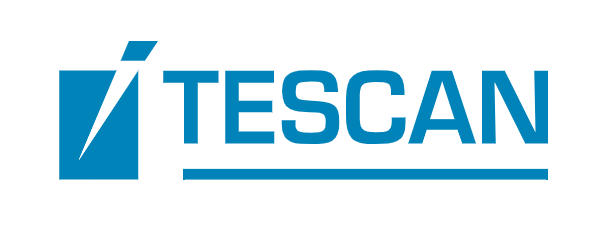Speaker
Description
Shales are sedimentary rocks with a complex mineralogy, where the mechanical properties are predominantly determined by the orientation of clay minerals[1]. Shales are increasingly studied, due to their use as cap rocks in carbon capture and storage (CCS) technologies. Attenuation-contrast computed tomography (CT) allows three-dimensional (3D) imaging of the microscale morphology, also allowing identification of some high-density inclusions. However, attempts at segmenting the attenuation-CT tomograms can be ill-defined or even impossible, as the hierarchical material contains mineralogical features at the nanoscale[2], thus giving partial volume effects precluding reliable assignment of sample compositions to the observed grayscale values. Better methods for 3D non-destructive imaging of shales are therefore in high demand.
X-ray diffraction computed tomography (XRD-CT) is a recent 3D imaging technique relying on synchrotron X-ray diffraction (XRD) as a mineral-sensitive contrast mechanism[3]. The chemical composition and mineralogy can be spatially resolved with micrometre resolution, allowing 3D mapping of minerals, which is crucial to image samples where physical sectioning of the samples risks changing the delicate sample microstructure, as is the case for shales. The diffracted X-rays additionally provide information about the crystallite orientation found in the sample, and can be mapped in 3D using X-ray diffraction tensor tomography (XRDTT)[4–7], which is a recent extension of XRD-CT.
Here, we demonstrate the use of XRD-CT to study the mineralogy and clay mineral orientation in Pierre shale. Figure 1a sketches an XRD-CT setup for measurement of a ~3 mm diameter cylindrical sample of Pierre shale. A large number (~$10^5$) of diffraction patterns were collected, and these contain information about the mineral composition and crystallite orientation. A corresponding attenuation-contrast CT cross-section is shown in Fig. 1b, revealing that the sample contains several highly attenuating mineral inclusions. The clay minerals are predominantly oriented with their stacking layer normal along the bedding direction (coinciding with the sample cylinder axis, see Fig. 1c). Notably, a band of a slightly different orientation is seen to stretch diagonally across the sample. By using XRDTT analysis, the clay mineral orientation is reconstructed in 3D, and regions of varying clay mineral preferred orientation in the samples are revealed, as shown in Fig. 1d. Additionally, high-density isotropically scattering mineral inclusions were found, and by the XRD analysis, these inclusions could irrevocably be concluded to contain pyrite.
While the voxel size in the current experiment was 50 $\mu$m, the continued experimental developments should in the near future allow resolutions below 100 nm. Our results show that XRD-CT/XRDTT is fast becoming a powerful method to study the complex structure of shales.
Acknowledgements
We are grateful to the Research Council of Norway for financial funding through FRINATEK (#275182) and its Centres of Excellence funding scheme (#262644).
References
[1] L. Leu, A. Georgiadis, M. J. Blunt, A. Busch, P. Bertier, K. Schweinar, M. Liebi, A. Menzel, H. Ott, Energy and Fuels 2016, 30, 10282.
[2] B. Chattopadhyay, A. S. Madathiparambil, F. K. Mürer, P. Cerasi, Y. Chushkin, F. Zontone, A. Gibaud, D. W. Breiby, J. Appl. Crystallogr. 2020, 53, 1562.
[3] G. Harding, J. Kosanetzky, U. Neitzel, Med. Phys. 1987, 14, 515.
[4] M. Liebi, M. Georgiadis, A. Menzel, P. Schneider, J. Kohlbrecher, O. Bunk, M. Guizar-Sicairos, Nature 2015, 527, 349.
[5] E. T. Skjønsfjell, T. Kringeland, H. H. H. H. Granlund, K. Høydalsvik, A. Diaz, D. W. Breiby, IUCr, J. Appl. Crystallogr. 2016, 49, 902.
[6] F. K. Mürer, S. Sanchez, M. Álvarez-Murga, M. Di Michiel, F. Pfeiffer, M. Bech, D. W. Breiby, Sci. Rep. 2018, 8, 1.
[7] F. K. Mürer, B. Chattopadhyay, A. S. Madathiparambil, K. R. Tekseth, M. Di Michiel, M. Liebi, M. B. Lilledahl, K. Olstad, D. W. Breiby, Sci. Rep. 2020, 1.
| Time Block Preference | Time Block A (09:00-12:00 CET) |
|---|---|
| Student Poster Award | Yes, I would like to enter this submission into the student poster award |
| Acceptance of Terms and Conditions | Click here to agree |






